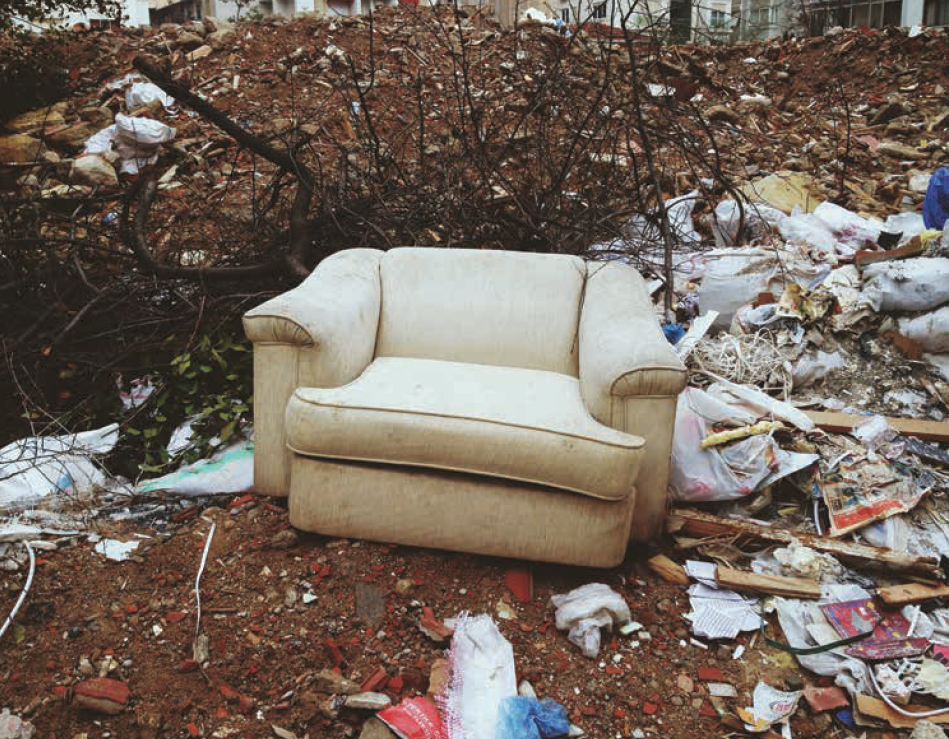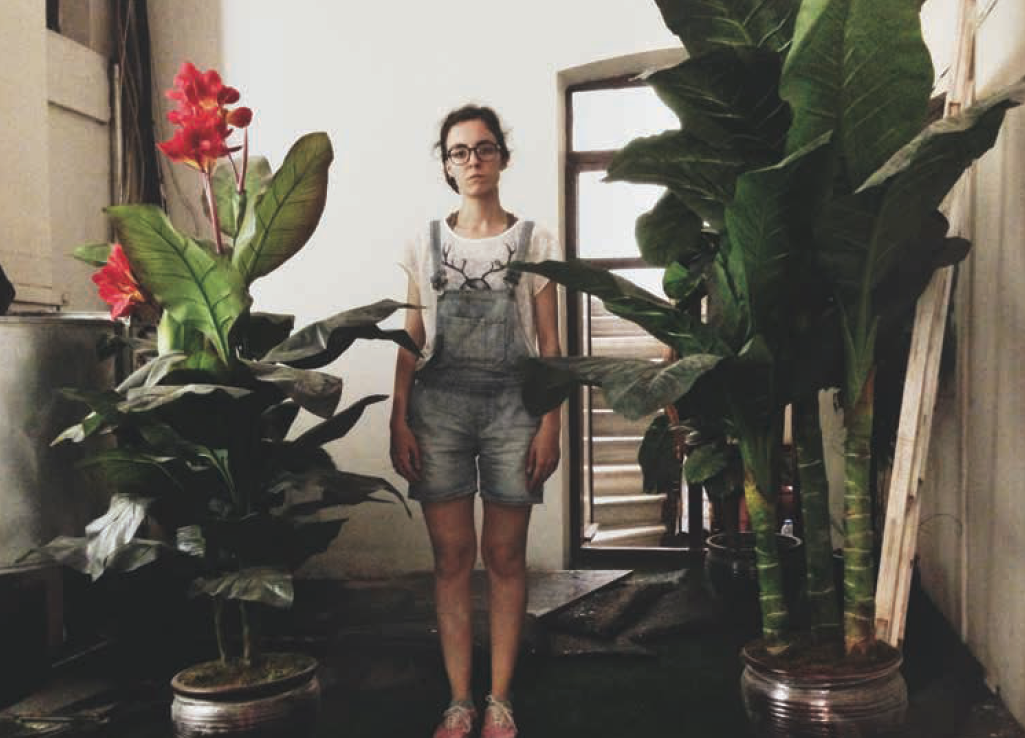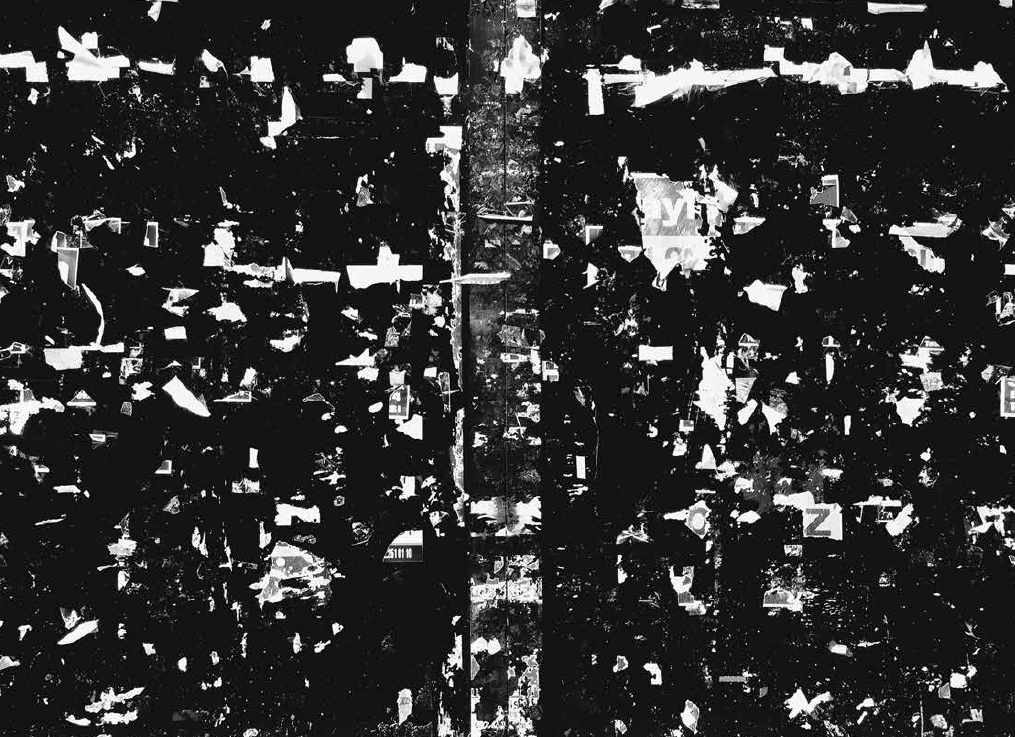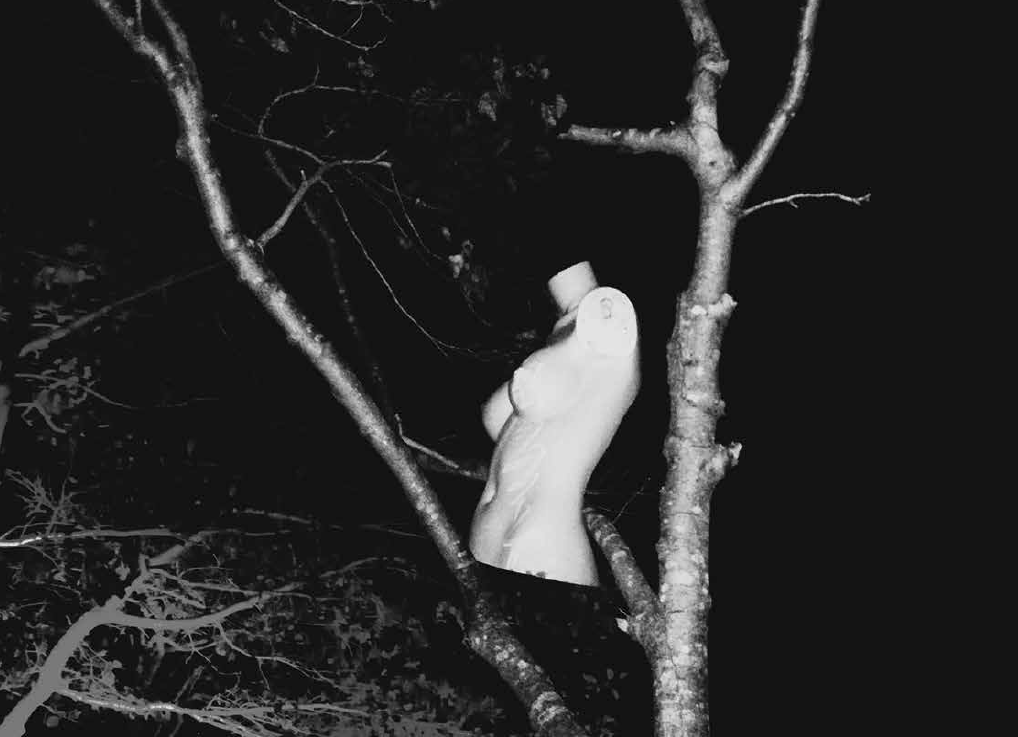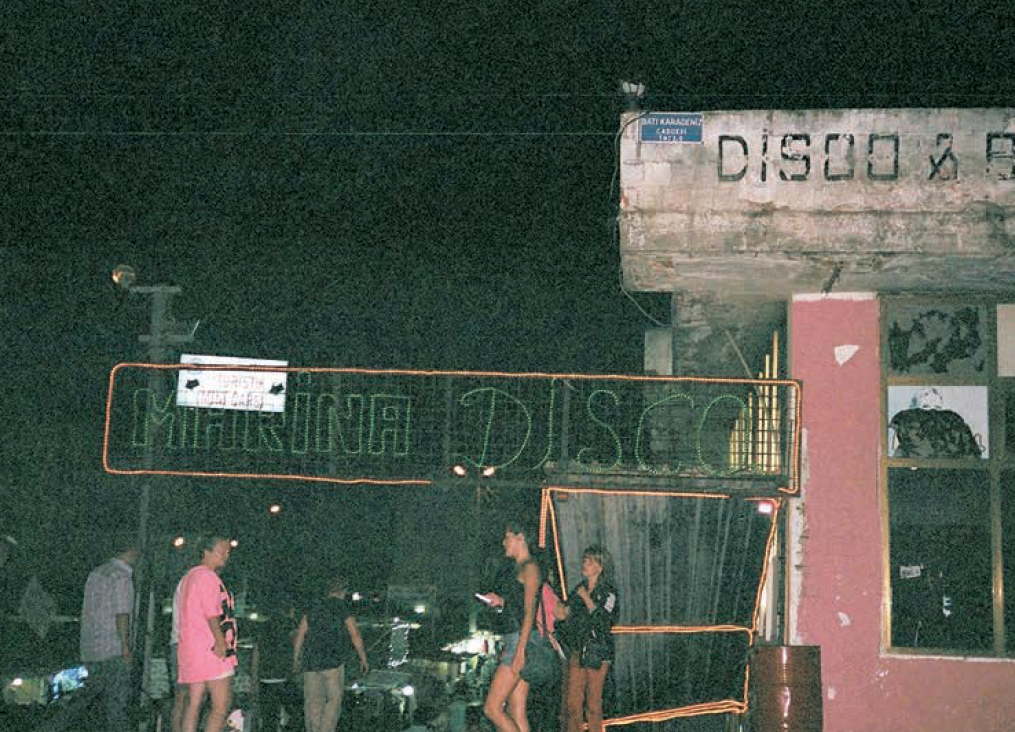















The book Quite a While explores the idea of forming a new whole from the remnants of destruction by reinterpreting the emotional gesture of ripping a stack of photographs. Torn into a handful of piles by Korkmaz's partner after an exasperated exchange, the photographs are ripped from the center, allowing Korkmaz to repair the images by conjoining the halves together to create new images. The mending process speaks to the perseverance of relationships and an urge to re-contextualize frustrated memories, embracing the irreversible yet formative impacts of wounds. One of many such juxtapositions combines a plate of luscious peaches left in the couples' bedroom in Buenos Aires with a view of their kitchen in Uruguay; Korkmaz alternates the sizes according to the space occupied in her memory, allowing photographs that loomed more largely in her recollection to occupy more space speaks to the complexity of love and attachment and the mind's resilient capacity to reassemble, arrange, and mend.
88pp, 8”×8”, 40 photos
Swiss-bound - hardcover
A Subjective View of Cansu Korkmaz by Max Blagg
Apart and Together Essay by Allen Frame
Quite a While by Cansu Korkmaz
ISBN 979-8-218-32375-2
Scha·den·freu·de
As a 3D object that cannot move on its own, books contain scenes that move when represented on screens. A layer of poetry? The German term Schadenfreude refers to the "pleasure derived by someone from another person's misfortune." A word to express complex emotions in a single word. When we look at the historical references of the word, we find the philosopher Arthur Schopenhauer referred to schadenfreude as the greatest sin of human feeling: “To feel envy is human, to savor schadenfreude is diabolic.”
Like in Eduardo Zamacois y Zabala’s Return to the Convent (1868), painting can document daily life like a video diary, and books hold static images together than become magic by the procession of letters, words, lines, and pages turning. In the book Schadenfreude, Korkmaz captures the moments when subjects still don’t know that they will fail, pausing narrative time to create connections backwards and forwards. Bringing together all the failed videos screenshots in a pleasurable object like an art books allows sustained looking at still video images and turns the durational home video into serial photography.
The book will allow viewers to perceive home video and photo book realities at a time when a new metaverse is being created to mirror the deformation of human psychology. In the end, it allows one to go back to the moment schadenfreude creeps up from the depths and disturbs the surface, exposing dynamic psychology and feelings. What a book can still do is be a companion that provokes thought and invites you to keep on going.
2019























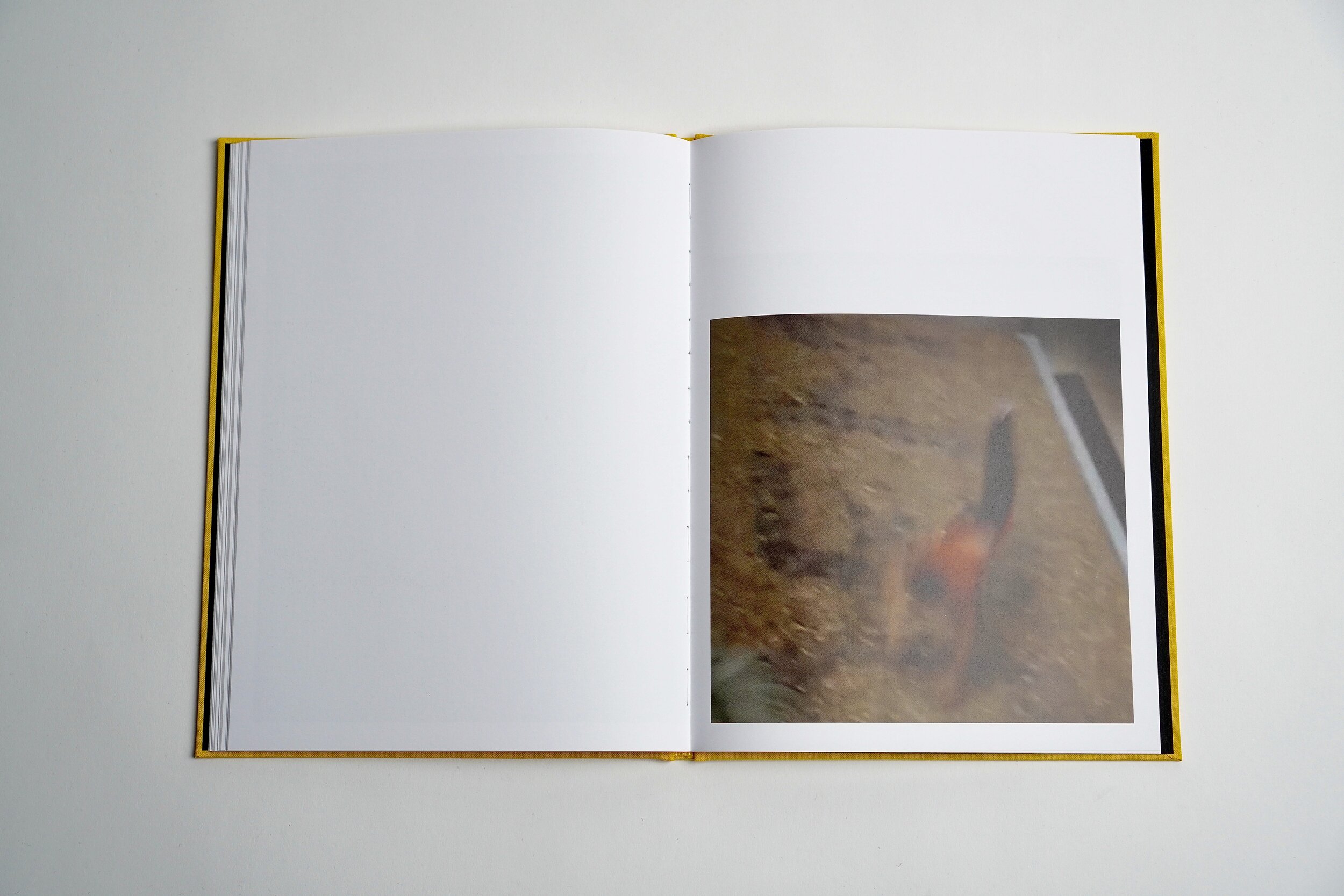






SILENCE
This is an embrace, a silence in which I'm afraid to disrupt the faces that I created by whispering with peace. The sounds that destroy this silence. This is not a love story, it is not a break-up, it is not a coming together. Stories can be rewritten, characters can disappear. Every room has a door that we knock on before we enter, this book has a window that you can glance through to be sure. Sound first seeps through the window, the sound of outside is as big as window. The window closes and that becomes silence, the sound and soundfulness of the outside. This silence and sound-fulness produce such an atmosphere that I sometimes hold my breath when I'm looking not make noise and sometimes I let out my breath to make noise and this book is a gift for all those moments.
SESSIZLIK
Bu bir kucaklama,huzur ile fısıldayarak yarattığım suretleri bozmaktan çekindiğim bir sessizlik. Aynı anda bu sessizliği yıkan seslilik. Bu bir aşk hikayesi değil,bir ayrılıkta değil,bir kavuşmada değil. Hikayeler yeniden yazılabilir,karakterler kaybolabilir. Her odanın bir kapısı vardır içeri girmeden önce tıklattığımız,bu kitabın bir penceresi var bakmadan önce ucundan kenarından göz atarak emin olmak istediğimiz. Ses önce pencereden süzülür,dışarının sesi pencere kadardır. Pencere kapanır ve sessizliğe dönüşür artık o içerinin sesi ve sesliliğidir. Bu sessizlik ve seslilik öyle bir atmosfer ki, bakarken bazen gürültü yapmamak için nefesimi tuttuğum, bazen de gürültü yapmak için sesli bir şekilde nefesimi bıraktığım zamanlara hediyedir bu kitap.
2015
“GARIP BIR ENERJIN VAR”
It is often to see a daily object in the middle of the composition in Cansu Korkmaz’s pictures. What stands out here is the aesthetic value the daily and insignificant forms add to the photograph. The clutter of forms is deliberately chosen to express the systematic chaos of the city she lives in with a fine aesthetic skill.
Cansu’s pictures are subjective; she expresses her own perception of city and life. What makes this perception special is the aesthetic distance she keeps between the subject and her camera.
Incompleteness is what we commonly face in Cansu’s pictures. The feeling of emptiness in the composition keeps us from a complete satisfaction. Her aim is not to show the perfect, on the contrary, she is more interested in the beauty and balance within the imperfect.
The objects captured from the world of ordinary things acquires and identity in Cansu’s photographs. She takes portraits of the objects: a stuffed mussels package, a dry branch rising from the worksite or dead flies are all portraits: in some cases spaceless, or sometimes looming unexpectedly somewhere in the city.
Cansu sees what we don’t see when we pass by on the street. Things which are “always there” things we lost our interest and awareness on them: she focuses on the George Perec’s “infra-ordinary” theory. “Garip bir enerjin var” shows the ordinary situations that are specific to “weirdness” and “energy” from the streets. In a way, with this book, Cansu gives what she takes from the street, to the street.
2013




